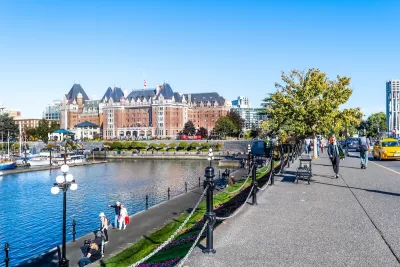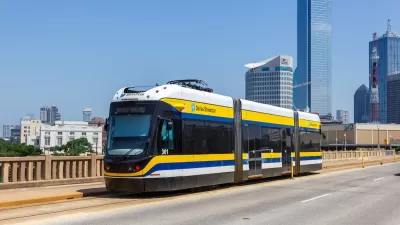Planning should be methodical and responsive to community needs, but not to the point of inefficiency. Too much planning can be just as harmful as too little.

As a professional planner I advocate methodical and inclusive planning, but that doesn’t mean that more planning is always better. Let me describe an example of excessive, unresponsive and inefficient planning, and how we can do better.
Here on Vancouver Island, most people agree that we need better public transit connections. BC Transit, our provincial agency, provides bus services in all cities and many smaller communities, but has no process for planning interregional connections. For example, the highway between the cities of Victoria and Nanaimo carries about 25,000 vehicles per day, and is often congested, but until recently had no public transit service. In 2012 regional officials asked BC Transit to establish a bus route between Duncan and Nanaimo, but it literally took a decade of detailed analysis and public consultation to plan the service, as illustrated in the timeline below. The resulting service is too infrequent (seven daily trips) and expensive ($7.50 one-way fares) to serve most potential trips.
Interregional Transit Service Discussion Document, BC Transit

Ridership on that route is modest, representing less than 1 percent of travel on the corridor, but the potential is huge. On a similar nearby corridor the #61 Sooke-Victoria route, which has 43 daily trips and $2.50 one-way fares, carries more than 20 percent peak-period person-trips indicating that many travellers will ride buses if they are convenient and affordable.
This example shows the harms of excessive planning. Planning should not require a decade to produce results, particularly something as straight-forward as a new bus route. A quick and simple process would have been far better. For example, when asked to develop a new bus route planners could have outlined the detailed, multi-step process that occurred, but offered a simple and quick alternative that uses in-house resources to design the service and have it quickly operating, with the motto, “Let’s try it and see what happens.”
I support public involvement in planning, but not necessarily the way it is commonly practiced. There are two major problems. First, the engaged people often poorly represent ultimate users, and they generally have only a vague idea of how a potential future facility or service will affect them.
I follow the “user design” philosophy described in the beautiful book, A Pattern Language, by Christopher Alexander and his team at the University of California Berkeley's Center for Environmental Structure. It identifies timeless patterns that can help guide users and practitioners — architects and planners — in collaborating to design buildings and communities. This includes everything from the optimal size of neighborhoods (a walkshed), to the importance of having diverse chairs in a room.
One of the book's key insights is that a portion of a project budget, typically about 5 percent, should be retained for adjustments to be made after the new facility or service is operational. This allows true users to recommend improvements based on their actual experience. It recognizes that planning must be dynamic to respond to user feedback and changing demands.
Nimble planning is flexible and responsive. It can include contingencies, for example, if buses are often crowded service is increased, and if ridership is less than expected the planning agency investigates why and identifies possible service improvements and TDM incentives to build ridership.
This has important implications for public transit planning. Transportation agencies should recognize that every major highway should have some level of public transit services, as discussed in my column, A Business Case for Improving Interregional Bus Service. It introduces an interregional level-of-service rating system from A (frequent, affordable and convenient) to E (less than daily, more expensive than driving, few amenities), similar to roadway level-of-service ratings. This allows the planning process to focus on the factors that users care about: Does transit service exist? How frequent is it? What does it cost? Is it convenient and integrated with other transportation services?
This recognizes that planning is often self-fulfilling: if we plan for minimal public transit service we will have minimal ridership, but if instead we invest in higher quality services with TDM incentive to encourage their use, we can achieve high ridership.

Alabama: Trump Terminates Settlements for Black Communities Harmed By Raw Sewage
Trump deemed the landmark civil rights agreement “illegal DEI and environmental justice policy.”

Planetizen Federal Action Tracker
A weekly monitor of how Trump’s orders and actions are impacting planners and planning in America.

The 120 Year Old Tiny Home Villages That Sheltered San Francisco’s Earthquake Refugees
More than a century ago, San Francisco mobilized to house thousands of residents displaced by the 1906 earthquake. Could their strategy offer a model for the present?

Ken Jennings Launches Transit Web Series
The Jeopardy champ wants you to ride public transit.

BLM To Rescind Public Lands Rule
The change will downgrade conservation, once again putting federal land at risk for mining and other extractive uses.

Indy Neighborhood Group Builds Temporary Multi-Use Path
Community members, aided in part by funding from the city, repurposed a vehicle lane to create a protected bike and pedestrian path for the summer season.
Urban Design for Planners 1: Software Tools
This six-course series explores essential urban design concepts using open source software and equips planners with the tools they need to participate fully in the urban design process.
Planning for Universal Design
Learn the tools for implementing Universal Design in planning regulations.
Clanton & Associates, Inc.
Jessamine County Fiscal Court
Institute for Housing and Urban Development Studies (IHS)
City of Grandview
Harvard GSD Executive Education
Toledo-Lucas County Plan Commissions
Salt Lake City
NYU Wagner Graduate School of Public Service






























